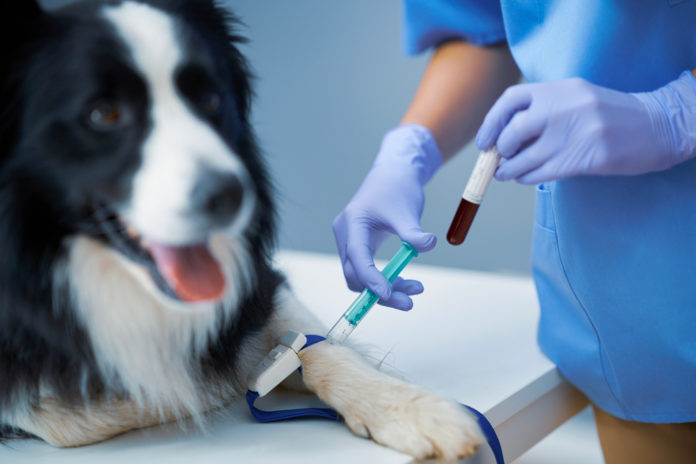Does your dog have osteoarthritis?

If your dog’s joints seem uncomfortable, he might have osteoarthritis. A simple blood test that measures levels of Hyaluronic Acid can help you find out.
Osteoarthritis (OA), a degenerative joint disease, is a common affliction in dogs of all breeds, ages, and sizes. OA is a progressive disease resulting from the breakdown of the cartilage and support structures inside the joints. As this cushioning breaks down, damage and inflammation increase, leading to decreased mobility and pain. The ability to identify joint damage becomes important, as many times the dog hides the symptoms until it’s advanced. A simple blood test for Hyaluronic Acid can determine which dogs are experiencing joint degeneration and allow you to intervene to manage the condition. Fortunately, there are many products and therapies available for these dogs that aim to help prevent, slow, and reverse the damage caused by OA, however the first step is to know when and if your dog needs them.
What is Hyaluronic Acid?
Hyaluronic Acid (HA) is a molecule found within the joint capsule, in the synovial fluid, that acts as a lubricant and cushion for the joint. In a healthy joint, HA remains inside the joint and provides support that prevents the bones from rubbing against each other. As joints begin to break down, HA starts leaking into the surrounding tissue and blood stream, where blood tests can pick it up. As the damage in the joint increases, the level of HA in the blood increases.

Which dogs should be tested?
While all mature dogs could benefit from tests for joint health once they are adults, certain risk factors exist. The following dogs are more prone to OA than others:
- Large and giant breed dogs
- Senior and geriatric dogs
- Active, working, and sporting dogs which may put repetitive stress on joints
- Breeds predisposed to skeletal disorders (dachshund, bulldogs, etc.)
- Obese dogs and dogs with poor nutrition
What does a positive HA test indicate?
When Hyaluronic Acid rises to sufficient levels, it becomes positive for joint damage. As long as liver disease is not present, positive HA is a rule-in for osteoarthritis and degenerative joint disease. Your veterinarian may wish to figure out if the joint damage is degenerative only or inflammatory as well, and determine which joints are affected. From there, depending on the level of HA and the rest of the workup (physical exam, imaging, etc.), a plan can be made to manage the joint damage. Several therapies exist that may be part of the plan you and your veterinarian decide on, including:
- Joint supplements and nutraceuticals
- NSAIDs
- Physiotherapy
- Weight management and diet changes
- Laser therapy and/or acupuncture
- Stem cell therapy/ PRP therapy
Getting your dog tested
Testing for joint health is simple and can be performed by your veterinarian. A simple blood draw is all that is needed to send a sample off to VDI Laboratory for testing. This can be performed as a stand-alone test, or as part of a more comprehensive wellness panel like VDI’s Canine Complete Wellness Panel. Once the blood is sent off, results will indicate the status of your dog’s joints. Recommended testing intervals are: annually for dogs one to five years old and bi-annually for dogs over five years of age or those at high risk of joint disease.




